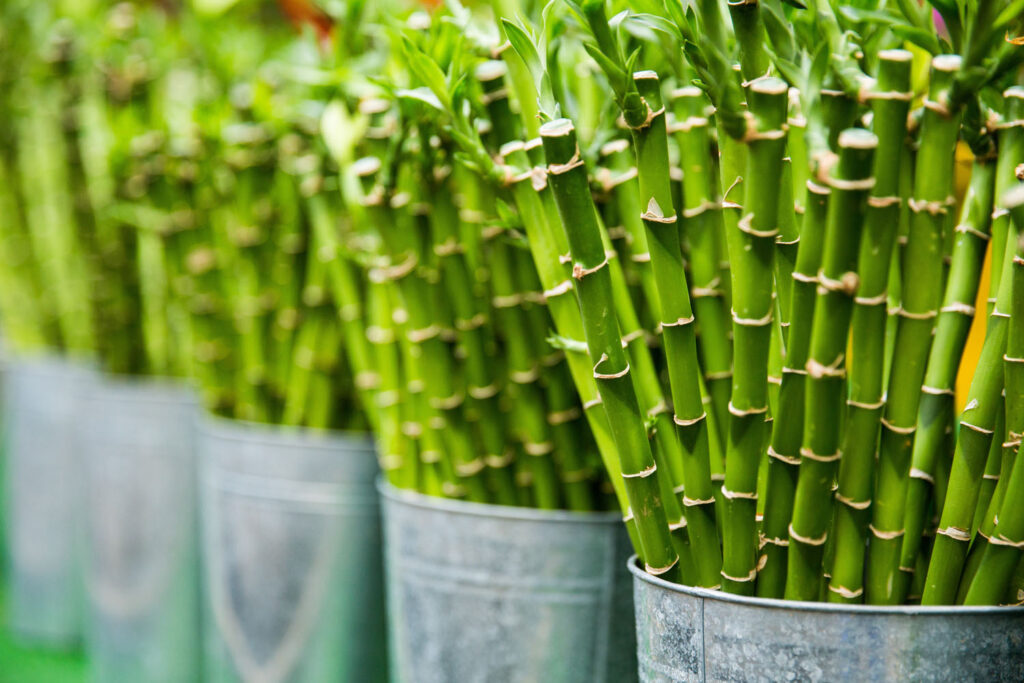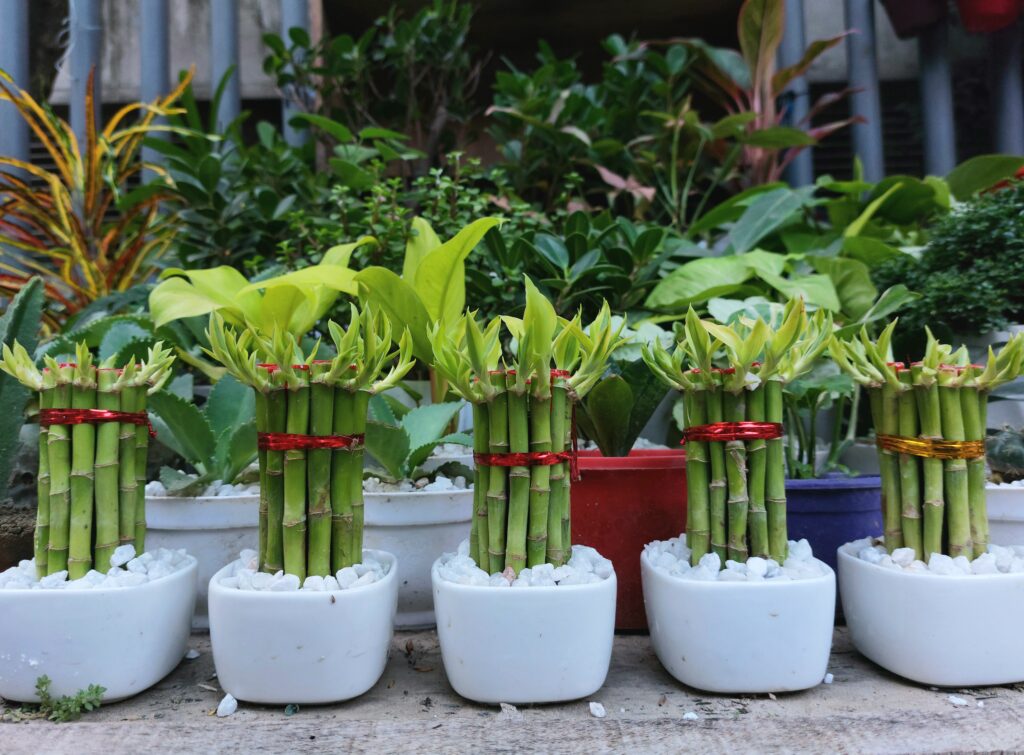Your Complete Handbook for Lucky Bamboo Care
Lucky Bamboo, known for bringing good fortune, prosperity, and positive energy, has become an increasingly popular choice among plant enthusiasts. If you’ve ever wondered how to care for these elegant green companions, you’re in the right place. In this guide, we’ll delve into the secrets of Lucky Bamboo care, exploring every aspect from sunlight and water to the meaningful symbolism behind this plant.
Understanding the Charm of Lucky Bamboo
Lucky Bamboo, scientifically known as Dracaena sanderiana, isn’t just a plant; it’s a symbol of good luck and happiness. Originating from Southeast Asia, this plant is believed to bring harmony and balance to its surroundings. Its unique combination of grace and resilience has made it a favorite choice for both homes and offices.

What Makes Lucky Bamboo Lucky?
Lucky Bamboo has deep roots in Feng Shui and Chinese culture. The number of stalks in a Lucky Bamboo arrangement holds significance. For instance, a plant with three stalks represents happiness, wealth, and longevity. The arrangement with seven stalks signifies good health, while twenty-one stalks symbolize blessings and enduring health. Understanding these symbols adds a touch of tradition to your green space.
The Perfect Lucky Bamboo Arrangement
When it comes to arranging Lucky Bamboo, creativity knows no bounds. Whether it’s a simple glass vase or an intricately designed pot, the key lies in ensuring proper drainage. Layering the bottom with pebbles and using well-draining soil helps maintain the right balance of moisture, preventing root rot.
Lighting: Finding the Right Spot – Lucky Bamboo Care
Lucky Bamboo is incredibly adaptable to various light conditions, making it an ideal choice for indoor spaces. While it can survive in low light, it thrives in bright, indirect sunlight. Placing your plant near a window with sheer curtains or on a well-lit desk ensures it receives the right amount of light without being exposed to direct sunlight.
Key Point: Ensure your Lucky Bamboo gets bright, indirect sunlight for optimal growth.
Watering for Lucky Bamboo Care: Nurturing the Roots
One of the most common misconceptions about Lucky Bamboo is its water requirements. Contrary to belief, these plants thrive in water, not soil. Using distilled or purified water, maintain an inch of water above the roots. Change the water every two to four weeks to prevent stagnation and maintain water quality.
Signs Your Lucky Bamboo Care Needs Water
- Yellowing Leaves: If the leaves turn yellow, it’s a sign of overexposure to sunlight or lack of water.
- Slimy Roots: Slimy, foul-smelling roots indicate bacterial growth due to poor water quality.
- Drooping Stalks: Stalks leaning or drooping signify dehydration. Adding water will revive their vitality.
Key Point: Regularly change the water to keep your Lucky Bamboo vibrant and healthy.
Temperature and Humidity – Lucky Bamboo Care
Lucky Bamboo thrives in a warm, humid environment. Maintaining a temperature between 65°F to 90°F (18°C to 32°C) is ideal. Avoid placing it near drafts, air conditioning units, or heating vents, as sudden temperature changes can harm the plant.
Enhancing Humidity Levels
Misting the leaves with water or placing the pot on a tray filled with water and pebbles helps elevate humidity. Proper humidity prevents the leaves from drying out and maintains the plant’s lush green appearance.
Key Point: Maintain a warm, humid atmosphere to keep your Lucky Bamboo thriving.
Fertilizing: Boosting Growth and Vibrancy
While Lucky Bamboo is relatively low-maintenance, it benefits from occasional feeding. Using a balanced liquid fertilizer, diluted to half its strength, apply it every two to four weeks during the growing season (spring and summer). Fertilizing ensures the plant receives essential nutrients, promoting healthy growth and vibrant greenery.
Signs Your Lucky Bamboo Needs Fertilizing
- Stunted Growth: If your plant isn’t growing as expected, it might lack essential nutrients.
- Pale Leaves: Yellowing or pale leaves indicate a nutrient deficiency.
- Sparse Foliage: If your Lucky Bamboo isn’t as bushy as before, it needs extra nutrients.
Key Point: Fertilize your Lucky Bamboo to encourage lush, vibrant growth.
Pruning and Maintenance: Shaping Your Lucky Charm
Pruning isn’t just for aesthetic purposes; it’s vital for the overall health of your Lucky Bamboo. Remove yellow or decaying leaves promptly to prevent the spread of diseases. Additionally, trim overcrowded or weak stalks to promote airflow and encourage healthier growth.
Propagating Lucky Bamboo
Propagating Lucky Bamboo is surprisingly easy. Using a sharp, clean knife, cut a healthy stalk into sections, ensuring each section has at least one node. Place these cuttings in water or soil, and within a few weeks, they’ll develop roots. This method allows you to expand your Lucky Bamboo collection or share the luck with friends and family.
Key Point: Regular pruning and propagation maintain the vitality of your Lucky Bamboo.
The Symbolism Behind Lucky Bamboo
Beyond its aesthetic appeal, Lucky Bamboo holds deep symbolism in various cultures. In Chinese tradition, it represents the harmony between the five elements: wood, water, earth, metal, and fire. Each element corresponds to different aspects of life, making Lucky Bamboo a powerful tool for achieving balance and positive energy.
Conclusion: Nurturing Luck and Greenery
Incorporating Lucky Bamboo into your living or working space isn’t just about adding greenery; it’s about inviting luck, prosperity, and positive energy. By understanding its care requirements and the symbolism it carries, you can cultivate a thriving, meaningful connection with this beautiful plant. Remember, a little love, attention, and the right environment are all it takes to nurture your very own lucky charm.
Frequently Asked Questions (FAQs) About Lucky Bamboo Care
- Is Lucky Bamboo suitable for outdoor planting?
- No, Lucky Bamboo is primarily an indoor plant. It thrives in low light conditions and should be protected from direct sunlight.
- Can I grow Lucky Bamboo in soil instead of water?
- Yes, Lucky Bamboo can be grown in well-draining soil. Ensure the soil is kept consistently moist, not waterlogged, to prevent root rot.
- How often should I change the water for my Lucky Bamboo?
- Change the water every two to four weeks, or when it becomes cloudy or foul-smelling. Fresh, clean water is essential for your plant’s health.
- Can I trim the roots of my Lucky Bamboo?
- Yes, you can trim the roots if they outgrow the container. Use sharp, clean scissors and trim the roots carefully to avoid damaging the plant.
- What does it mean if my Lucky Bamboo is turning yellow?
- Yellowing leaves can indicate overexposure to sunlight, lack of water, or poor water quality. Assess the plant’s location and water quality to address the issue.

